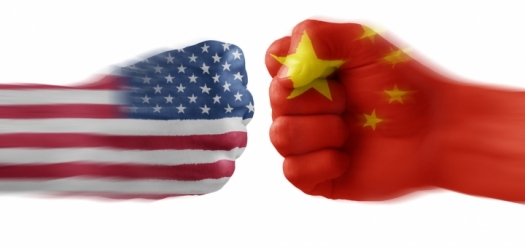US Department of Commerce rules on China solar

The US Department of Commerce has released its affirmative final determinations in the antidumping (AD) and countervailing duty (CVD) investigations of imports of crystalline silicon photovoltaic cells, whether or not assembled into modules (solar cells) from the People's Republic of China (China). For the purpose of AD investigations, dumping occurs when a foreign company is found to sell a product in the United States at less than its fair value. For the purpose of CVD investigations, countervailable subsidies are financial assistance from foreign governments that benefit the production of goods from foreign companies and are limited to specific enterprises or industries, or are contingent either upon export performance or upon the use of domestic goods over imported goods.
Commerce determined that Chinese producers/exporters have sold solar cells in the United States at dumping margins ranging from 18.32 to 249.96 percent. Commerce also determined that Chinese producers/exporters have received countervailable subsidies of 14.78 to 15.97 percent.
In the AD investigation, mandatory respondent Suntech Power was determined to have a final dumping margin of 31.73 percent. Trina Solar Energy was determined to have a final dumping margin of 18.32 percent. Fifty-nine other exporters (see attached list) qualified for a separate dumping rate of 25.96 percent. All remaining Chinese exporters received a final dumping rate of 249.96 percent.
In the CVD investigation, mandatory respondent Suntech Power and 10 of its affiliates was determined to have a final net subsidy rate of 14.78 percent. Trina Solar was determined to have a final net subsidy rate of 15.97 percent. All other Chinese producers/exporters received a final net subsidy rate of 15.24 percent.
As a result, provisional duty deposits, normally collected as of the date of publication of Commerce's preliminary determinations, will be collected 90 days prior to that date with the U.S. Department of Commerce | International Trade Administration.
Antidumping duty deposits applied to Wuxi Suntech will be collected as of the date of publication of Commerce's preliminary AD determination. In order for this early duty deposit collection to be maintained, the U.S. International Trade Commission (ITC) must also reach an affirmative finding regarding critical circumstances. As a result of the final AD determination, Commerce will instruct U.S. Customs and Border Protection (CBP) to collect cash deposits or bonds equal to the applicable weighted-average dumping margins. As a result of the affirmative final CVD determination, Commerce will order the resumption of the suspension of liquidation and require a cash deposit equal to the final net subsidy rates if the ITC issues a final affirmative injury determination.
The petitioner for these investigations is SolarWorld Industries America Inc. (OR).
The information given and the large number of tables caused some confusion as to what the impact actually was on Chinese companies prompting the Coalition of Affordable Solar Energy (CASE) to release a clarifying press release focusing on the required 10.54% reduction in the AD rate to avoid double counting of anti-subsidy tariffs. They even provide the chart below to assist in understanding.
commented Rhone Resch, president and CEO of the Solar Energy Industries Association (SEIA), commented on the determinations in the final phase investigation of solar products from China:
"As the end of these investigations near, it's not too soon to take stock of what has been achieved, consider whether opportunities were missed, and, most importantly, start thinking about how to move forward," commented Rhone Resch, president and CEO of the Solar Energy Industries Association (SEIA). "While today's decision rightly shows that the U.S. will protect its rights in the global trading system, we're also learning that trade litigation alone is not enough to solve the complex challenges that exist between the U.S. and China. What is immediately clear is that for solar to thrive globally, there is a need to build consensus on acceptable forms of government support for industry.
"Prior to these trade cases, the U.S. and Chinese solar industries enjoyed a strong, productive working relationship. For both sides to succeed going forward, we must return to our collaborative roots at both the industry and government levels. Indeed, this collaborative spirit is alive and well elsewhere in the global renewable energy industry. This week, SEIA, other trade groups, and multinational companies joined forces to call for mutually-beneficial, long-term trade solutions through the World Economic Forum's Green Growth Action Alliance. If the opposing parties come to the table, even at this late date, and work together to help grow this global industry, the possibilities are endless."
E.L. "Mick" McDaniel, Managing Director of Suntech America had this to say, "Unilateral trade barriers will not make any one company more competitive, but will make solar less competitive against other forms of electricity generation. These ill-conceived taxes on solar products were the outcome of an unrealistic analysis that compared, for example, Suntech's costs of production to the theoretical costs of production in Thailand, a country with less than 100MW of PV production capacity. It's unfortunate that the process works this way; however, Suntech is well-prepared for the future and to serve the needs of our customers."
"As a multinational company with global supply chains and manufacturing facilities in three countries, including Goodyear, Arizona, we will continue to provide our customers in the U.S. with hundreds of megawatts of high-quality and affordable solar products that will not be subject to tariffs," continued Mr. McDaniel.
"The growth of destructive trade barriers represents a significant, long-term challenge to the health of the solar industry in the U.S. and globally. Nobody benefits from a global solar trade war except for those who want a less competitive solar industry," concluded Mr. McDaniel.
The final anti-dumping rates range from 18.32% to 31.73% for participating companies, and 249.96% for non-participants.
The countervailing duties rates range from 14.78% to 15.97%.
The US case has been followed by an EU investigation into the same behaviour and now India and other territories are looking to follow the US lead providing more difficulty for Chinese companies


































